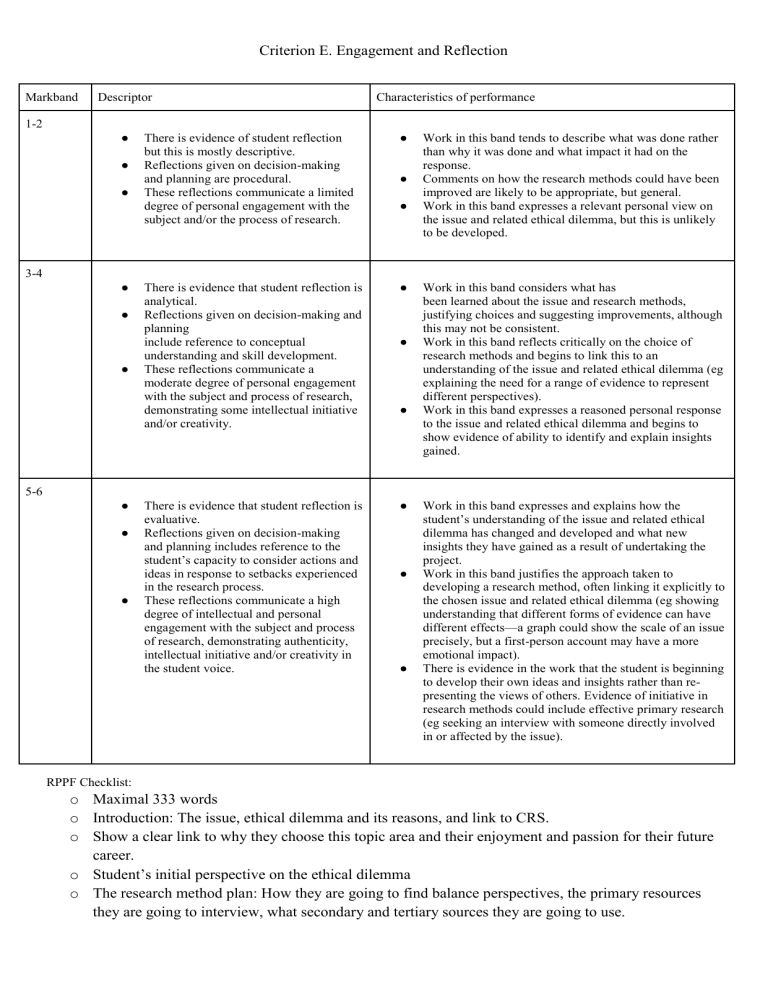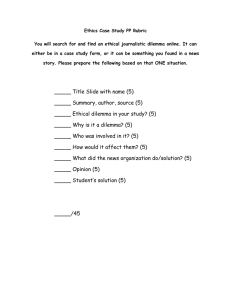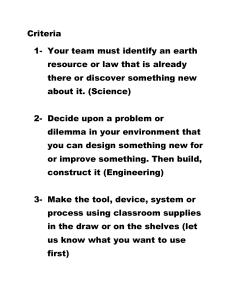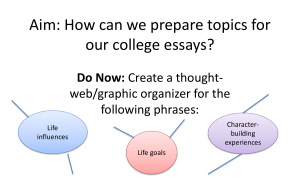
Criterion E. Engagement and Reflection Markband Descriptor Characteristics of performance 1-2 ● ● ● There is evidence of student reflection but this is mostly descriptive. Reflections given on decision-making and planning are procedural. These reflections communicate a limited degree of personal engagement with the subject and/or the process of research. ● There is evidence that student reflection is analytical. Reflections given on decision-making and planning include reference to conceptual understanding and skill development. These reflections communicate a moderate degree of personal engagement with the subject and process of research, demonstrating some intellectual initiative and/or creativity. ● There is evidence that student reflection is evaluative. Reflections given on decision-making and planning includes reference to the student’s capacity to consider actions and ideas in response to setbacks experienced in the research process. These reflections communicate a high degree of intellectual and personal engagement with the subject and process of research, demonstrating authenticity, intellectual initiative and/or creativity in the student voice. ● ● ● Work in this band tends to describe what was done rather than why it was done and what impact it had on the response. Comments on how the research methods could have been improved are likely to be appropriate, but general. Work in this band expresses a relevant personal view on the issue and related ethical dilemma, but this is unlikely to be developed. 3-4 ● ● ● ● ● Work in this band considers what has been learned about the issue and research methods, justifying choices and suggesting improvements, although this may not be consistent. Work in this band reflects critically on the choice of research methods and begins to link this to an understanding of the issue and related ethical dilemma (eg explaining the need for a range of evidence to represent different perspectives). Work in this band expresses a reasoned personal response to the issue and related ethical dilemma and begins to show evidence of ability to identify and explain insights gained. 5-6 ● ● ● ● ● Work in this band expresses and explains how the student’s understanding of the issue and related ethical dilemma has changed and developed and what new insights they have gained as a result of undertaking the project. Work in this band justifies the approach taken to developing a research method, often linking it explicitly to the chosen issue and related ethical dilemma (eg showing understanding that different forms of evidence can have different effects—a graph could show the scale of an issue precisely, but a first-person account may have a more emotional impact). There is evidence in the work that the student is beginning to develop their own ideas and insights rather than representing the views of others. Evidence of initiative in research methods could include effective primary research (eg seeking an interview with someone directly involved in or affected by the issue). RPPF Checklist: o Maximal 333 words o Introduction: The issue, ethical dilemma and its reasons, and link to CRS. o Show a clear link to why they choose this topic area and their enjoyment and passion for their future career. o Student’s initial perspective on the ethical dilemma o The research method plan: How they are going to find balance perspectives, the primary resources they are going to interview, what secondary and tertiary sources they are going to use.


